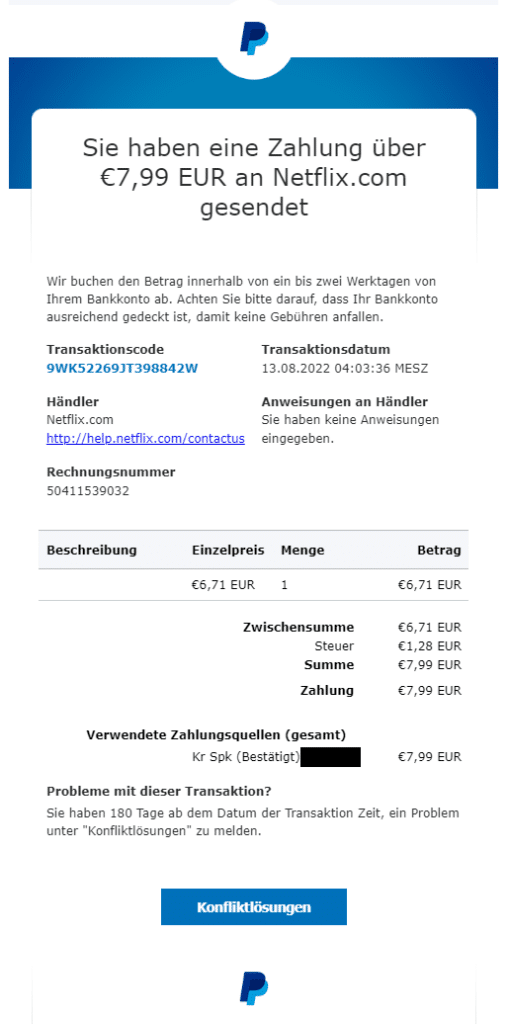We have rarely had a case like this before: a real email from PayPal was apparently copied and given other links. Anyone who has a PayPal account will receive confirmation messages via email after payments. In this case, however, the email does not come from an address in the domain paypal .de or paypal .com, but from various others that apparently have nothing to do with PayPal at all.
In real PayPal emails there is a personal salutation above the blue P logo. For these phishing emails, the recipient's email address is listed there. The transaction code and invoice number are the same for all emails we receive.

The link provided to the retailer supposedly leads to a Netflix page. But: If you hold the mouse cursor over it without clicking on the link, a completely different Internet address will be displayed that you would get to with just one click. It then shows a fake PayPal page where you should log in. If you do this, your login details will be given to the criminals, who could then access your PayPal account.
So this example shows how important it is to be skeptical even about emails that look real! Always pay attention to the following points:
Is the sender correct? Don't just pay attention to the name displayed, but also look for the email address from which the message comes.
Do the links lead to the specified pages? Any text can be linked. What appears as a link in a text may not be the real destination. Hold the mouse pointer over the link without clicking on it. Your email program will then show the actual link destination at the top or bottom of the window or directly at the mouse pointer.
It's better to open the website in your browser or use the app! The safest way is not to click on a link in an unexpected email, but rather to open the page of the online service from which the email supposedly comes in a browser. In this case, type www.paypal.de into the address bar of your browser and log in to your account there.
Many banks and companies also have their own apps where you can view your accounts on your smartphone. If you see unknown account movements this way, you can clarify them with the provider from there. If you don't see any, you know that the email must be a scam.
Source: Consumer advice center NRW
Also read:
Maya the Bee: After the sex scandal, Netflix removed an episode of the series
Notes:
1) This content reflects the current state of affairs at the time of publication. The reproduction of individual images, screenshots, embeds or video sequences serves to discuss the topic. 2) Individual contributions were created through the use of machine assistance and were carefully checked by the Mimikama editorial team before publication. ( Reason )

